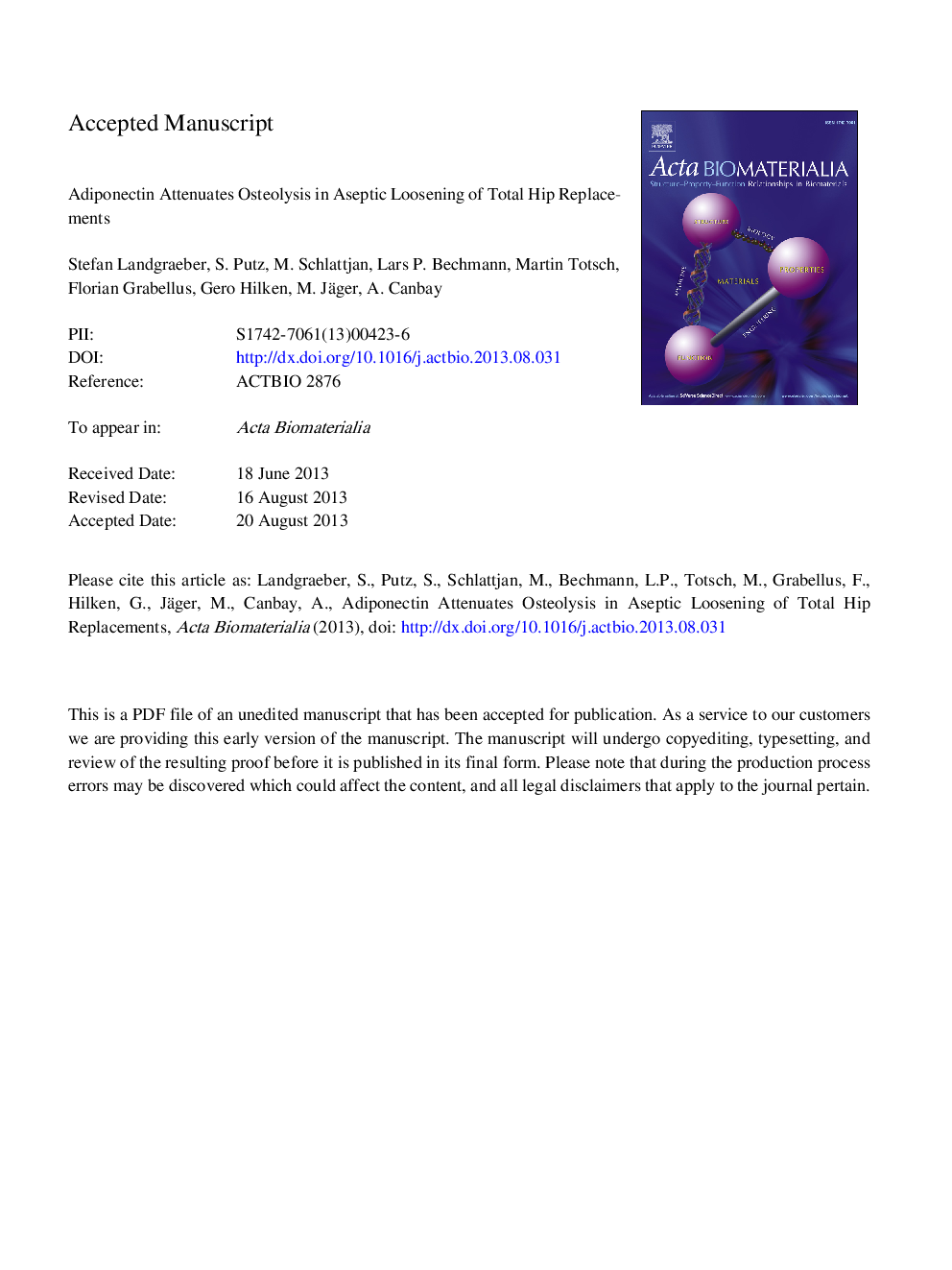| Article ID | Journal | Published Year | Pages | File Type |
|---|---|---|---|---|
| 10159432 | Acta Biomaterialia | 2014 | 32 Pages |
Abstract
Joint replacements have a longer durability in patients with high serum levels of adiponectin (APN) than in patients with low levels. We aimed to characterize the unknown pathophysiological effects of APN on wear particle-induced inflammation, apoptosis and osteolysis. Immunohistochemistry was performed to detect APN, its receptors and apoptosis in patients with and without aseptic loosening. Additionally, APN knockout mouse studies and pharmacological intervention of APN were performed in an established calvarial mouse model. Osteolysis and inflammation were quantified by histomorphometry and microcomputed tomography, apoptosis by immunohistochemistry and TUNEL assay. In a cell culture model, human monocyte-derived macrophages were incubated with or without metal wear debris particles and partially treated with APN. Expression of APN, AdipoR1 and calreticulin in specimens from patients with aseptic loosening were significantly higher than in patients without aseptic loosening. Administration of APN in mice significantly reduced wear particle-induced inflammation, osteolysis and the number of caspase-3-positive macrophages. The cell culture model showed that APN leads to significantly lower values of TNF-α. These findings support a prominent role of APN in the development of particle-induced osteolysis and APN may be therapeutically useful in patients with aseptic loosening.
Related Topics
Physical Sciences and Engineering
Chemical Engineering
Bioengineering
Authors
Stefan Landgraeber, S. Putz, M. Schlattjan, Lars P. Bechmann, Martin Totsch, Florian Grabellus, Gero Hilken, M. Jäger, A. Canbay,
